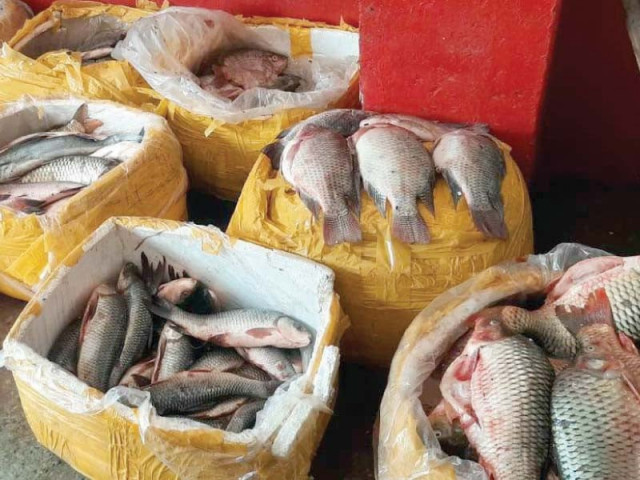Indigenous river fish population faces extinction
Pollution accompanying industrialization, urbanization has compromised survival prospects of numerous aquatic species

As industrialization and urbanization dominate the national agenda, the accompanying pollution and disappearance of natural water bodies has compromised the survival prospects of numerous aquatic species.
The disappearance of the indigenous river fish is evident in the fact that the Fisheries and Aquaculture Complex at Manawan, which is home to 169 specimen of fish collected from the four rivers namely Jhelum, Chenab, Ravi and Sutlej, displays many samples of fish, like the Mahseer, Blind Dolphin, Kalbasu, and Lahori Khaga, which are no longer present in the rivers, and are either already extinct or are on the verge of extinction.
“The Lahori Khaga is on display in our museum but sadly it is disappearing from the rivers,” regretted Dr. Bilal Ahmed, Principal at the Fisheries Museum.
According to aquaculture experts, the major reasons behind the extinction of indigenous fish are water pollution, water scarcity and climate change, which have triggered environmental conditions that are unfavorable for the survival of river fish, like the Lahori Khaga.
Professor Noor Khan from the Department of Fisheries and Aquaculture at Punjab University nostalgically recalled times when visitors from all over the country would relish eating the Lahori Khaga during the winter.
“Now, the Khaga is no longer readily available in the markets since its population is dying in large numbers due to the toxic contamination of water bodies by sewage water and the overall scarcity of fresh water sources,” explained Professor Khan, further adding that the breeding of non-native fish in local water bodies had exacerbated the harm facing the indigenous fish population.
In their efforts to expand the market for seafood and boost its consumption, many traders had increasingly started importing foreign fish species like the Tilapia, Cyprinus carpio, Channel catfish, Shad fish, Silver carp, Grass carp and many other colorful fish, breeding them in local water bodies, which accelerated the pace of extinction of the indigenous aquatics.
While no information exists about the effects of other aquatic creatures like turtles and crabs, on the indigenous fish populations, experts believe that the presence of imported fish like Tilapia greatly offsets the growth cycle of local fish, leading them to an unanticipated death.
“The Tilapia fish lays 20,000 eggs at a time and the breeding rate of other foreign fish is even higher. Under such competitive survival conditions, local fish are easily outnumbered and eventually annihilated,” said an aquaculture expert.
The matter is made much worse by the revelation that no policy regarding the import of non-native species of fish exists at the national level, allowing people to conveniently import fishes for the sake of aquariums or meat, while the government institutions remain tight-lipped.
In his response to the extinction dilemma haunting the local fish population, Dr. Zahid Sharif, Director at the Fisheries and Aquaculture Complex, Manawan acknowledged the decreasing number of indigenous fish in natural water bodies. “In order to combat this, Punjab Fisheries Department prepares millions of fish seeds of the Rahu, Baam and Singhara kinds every year and releases them in rivers and barrages to even out the effects of their looming extinction,” affirmed Dr. Sharif.
Published in The Express Tribune, October 31st, 2023.



















COMMENTS
Comments are moderated and generally will be posted if they are on-topic and not abusive.
For more information, please see our Comments FAQ